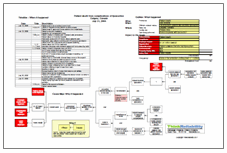On July 18, 2008, a young mother of two went in for a routine tummy tuck (abdominoplasty). Although liposuction was frequently performed along with the surgery, the patient had declined the liposuction option. Although there were some complications related to low oxygen during the procedure, the patient was released to her husband that evening. She was sick the remainder of the evening but assumed it was reaction from the anesthesia. The next morning she woke with a severe headache that worsened until she asked her husband to call an ambulance. The paramedic consulted with the attending physician and gave the patient morphine for her pain. The patient then went into convulsions and stopped breathing. The patient was put into a chemically reduced coma to relieve swelling on her brain. She never recovered and was taken off life support on July 31, 2008.
The medical examiner determined that it was likely that a fat embolism, a rare complication of liposuction, had prevented blood flow to her brain, causing her death. Because the patient had declined liposuction, it’s unclear how she ended up having the procedure. It appears that the patient may not have known that she had liposuction, and hence, was not aware of the potential complications including fat embolisms, from liposuction. The nurse who presented the surgical consent form to the patient said she hadn’t brought up liposuction because it was “implied” as part of a tummy tuck.
 It is unclear if the outcome would have been different had the patient received treatment more quickly. The patient was released to her husband the day of the surgery, as it was considered an outpatient procedure, even though there were complications related to low oxygen. She was not taken to the emergency room until more than 24 hours after the surgery, possibly because of her and her husband’s insufficient understanding of the risks of liposuction.
It is unclear if the outcome would have been different had the patient received treatment more quickly. The patient was released to her husband the day of the surgery, as it was considered an outpatient procedure, even though there were complications related to low oxygen. She was not taken to the emergency room until more than 24 hours after the surgery, possibly because of her and her husband’s insufficient understanding of the risks of liposuction.
The public inquiry into improvements to the healthcare system that might reduce the risks of similar incidents occurring (though the risks for fat embolisms causing brain blood flow blockage are very low) ended last week. When the results of the public inquiry are released, our initial Cause Map can be updated and the potential action items resulting can be added.
